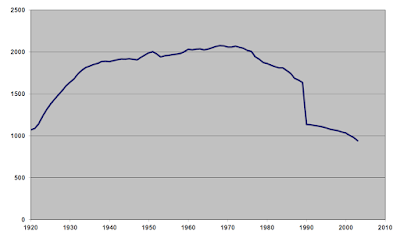Following on from the previous post, I will now address the
second major reason for the implementation of WRA.
The continent Africa has tremendous growth potential based
on its resource availability with water being one central component. To support
a sustainable socio-economic development in Africa, it is absolutely necessary
to have a critical understanding of the hydrological system in this vast
geographical area that has extremely variable meteorological and geographical
conditions. It goes without saying that accurate information on the condition
and trend of a country’s water resources is a prerequisite to a better future
in Africa, especially when the population growth and climate changes put
increasingly pressure on the already scarce water resources.
According to the United Nations
Economic Commission for Africa, water has an economic value in itself. It
states that there needs to be a wider appreciation of water in this respect to
prevent ‘wasteful and environmentally damaging uses of the resources’. To achieve
this, it offers WRA as a way of best evaluating the economic value of water.
As with all government spending and programme, water
resources assessments need to be justified, whether environmentally, socially
or economically. Under the current homogeny of neoliberal capitalists society,
every penny spent logically should be backed up with some cost and benefit
analysis. In addition to the economic benefit of water itself, researchers have
also found that the benefit-to-cost ratios for hydrological data collection
alone ranges from 5 to 10 (i.e. for every pound you invest in hydrological data
collection, you make 5-10 pounds out of it in the future), with some even going
up to 40. WRA therefore play an important role in guiding water resources
management.
Another great example that supports the use of WRA in IWRM
is the simulation of river discharge at the Hadejia-Nguru Wetlands. Through
modelling different scenarios of dam operation and construction, it is shown
that the less implementation of dams and irrigation scheme, the greater the
flood extent and the less reduce in groundwater storage. the authors suggest
that for a more sustainable water resources management, it is best to regulate
river discharge according to its natural environmental regime that harmonises
with the social-economic activities and biodiversity of the region.
This view is echoed in Barbier’s (2003) finding that ‘there
is a direct trade-off between increasing irrigation upstream and impacts on the
floodplain downstream’. Through putting economic values on the ecosystem
services the river provides, it suggests that a full implementation and
construction plan of dam operation would result in a loss of US$20.2 to 20.9
million. However, if mitigation plan were put in place, it would help save US$4
million worth of money. According to Save the Children, you could make lasting
changes to African children’s living conditions with less than $1 a day.
Assuming that to support a child into his adulthood (say, 20-year-old), it
would take about $7300. With the $4 million saved, we could help an extra 547
children in Africa!
WRA is not just limited for use by the government. It is
also tremendeously useful for the private sectors (e.g. engineering and
construction companies) as it provides critical information for planning,
development and operation processes. For example, the company ARCADIS produced
a comprehensive assessment on water sustainability for major cities around the
world and rank them against each other. The report looked at aspects such as
water resilience, efficiency, and quality and the city, Rotterdam, came out on
top out of 50 cities evaluated. It suggests although the city itself lies below
the sea level, due to its excellent water management and robust flood defences,
it scores one of the highest in terms of its water resilience. Information provided
by this WRA helps to attract more investment as it allows a much more
accessible communication to stakeholders and potential clients. It shows that
WRA is not just limited to government but also very useful to the private sector.
Overall, these example show why we should pay much more
attention to WRA, at least from an economic standpoint.





